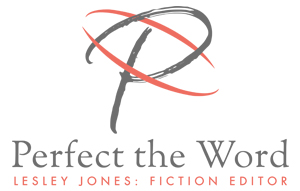‘Don’t tell me the moon is shining; show me the glint of light on broken glass.’ Anton Chekhov
This is the second in an occasional series of posts for authors based on actual advice I have given to actual human writers, who have then acted upon said advice. The majority of the content is lifted (almost) directly from my editorial letters (plus a few sneaky add-ins), with references to the particular books and authors redacted. The posts are an accurate example of the sort of editorial letter you will receive from me after the first pass of a developmental or deep line edit. Most of the novels I edit are crime/thriller and sci fi/fantasy, but I also edit historical novels, romance and other commercial fiction, so you may notice references to particular genres in the posts. However, the advice given is usually transferable across genres.
The subject of this post is showing vs telling but, as ever, issues almost always overlap, and if one occurs it’s likely others have come along for the ride, so there may be mentions of other topics.
- Show, don’t tell is among the advice most commonly urged upon writers – but not everyone understands what it means. We’re talking novels here, not picture books, and we tell a story, so how can we show the reader what we want them to know? Chekhov’s comment above says it all, really. You can see just from that one sentence that the first clause is a mere statement of fact, but you can also see how evocative the second clause is – how it draws us in, wanting to know more. To borrow from Janice Hardy, ‘It’s letting readers see what’s going on – not explaining what happened – using language that fits your story.’
- Emma Darwin says: ‘Showing is for making the reader feel they’re in there: feel as in smell, touch, see, hear, believe the actual experience of the characters.’ Showing the reader what is happening in the story creates immediacy, immersion and interpretation, allowing the reader to experience the story rather than being told by exposition.
- Imagine being lost in a new city. You ask a resident for directions to a tourist destination and they tell you ‘take the first right, second left, then third right and you’re there’. Probably a little longer than that – but are you going to remember? What if they said ‘take the first right over there by the cake shop, then you’ll see a pub called the King’s Arms on the corner of the second left – take that. Walk a little further until you see the Fancy Books shop – that’s the third right. Turn there and you’ll have arrived’? Are you more likely to remember the instructions that were just told – or the ones illustrated by extra landmarks that showed you where to turn?
- Show, don’t tell has a couple of first cousins – info dumping and author commentary (I also include a style of writing known as reportage under this umbrella). Reportage or exposition is when the author simply tells the reader a series of events or information about characters’ feelings without showing them in deep thought or dialogue, or in dynamic description. These little pests tend to create an extra character out of the author, distancing the reader from the action and drawing them out of the novel. They can be identified by over-adjectifying (new word alert!), over-descriptive writing, exposition, and summarising on the reader’s behalf. They slow down the pace of a thriller, and indeed any novel; for the reader, it’s as if they’re reading a second-hand report in a newspaper, sometimes with the views and knowledge of the journalist thrown in for good measure. This is sometimes a hard habit to break for people who are used to working in the media, and indeed for screen or scriptwriters, who can sometimes be tempted to write as if giving stage directions. Author commentary is one of the most blatant forms of telling – telling the reader something you as the author think they need to know. Also, aside from the fact that these things are better shown rather than told, often they’re not needed at all. As I’ve often repeated in my comments – trust your reader.
- But the above is not to say we should never tell or use exposition. It can be useful at the beginning or end of a chapter. Think of the first line of The Crow Road by Iain Banks: ‘It was the day my grandmother exploded.’ That’s telling – but it’s fascinating! It will certainly draw the reader in. The first line of 1984 by George Orwell: ‘It was a bright cold day in April, and the clocks were striking thirteen.’ Bald description? Yes. Boring description? No way! I’ll refer you to Beth Hill – show and tell is not just a game we play.
- Telling rather than showing often results in rambling text, written almost like a biographical memoir, and often contains little dialogue. The narrative distance becomes so large that the reader is pulled away from the story and becomes less invested in it. This is discourse rather than story. By telling the reader what you think they need to know you are creating narrative distance. The reader will find their involvement in the story so much greater if authors can restrain themselves from adding pages of discursive commentary and intrusion. Show the reader the important elements, thereby drawing them into the story.
- Sometimes, rather than writing dialogue, an author writes a conversation that is reported discursively rather than having the dialogue shown. This is, I’m sorry to say, boring for the reader, who might quite easily skip that portion of the text, thereby missing something important. The POV character at the time is being replaced by a narrator. These areas of narrative will be vastly improved by adding some dialogue.
Conversely, if an author has what they believe to be a linchpin character, that character sometimes has what is almost a soliloquy that goes on for many paragraphs, with no input from anyone else. These come across as info dumps and a lot of their content is often surplus to requirements.
There is a temptation for well-read and highly educated authors to share their knowledge with their readers, but so often this is not appropriate. The reader must be allowed to infer certain conclusions. - In a recent edit, my author spent half a page describing a kitchen we were to visit only once in the whole book. Clearly this could be cut down – but how? What was important in the scene was the sumptuousness of the kitchen, to show the character’s comparative wealth, and the view from its windows for the same reason. The description read rather like an estate agent’s particulars. I showed the author how to rewrite the passage with the main character strolling over to the window to take in the view, then going back to the main counter to make coffee, and without using ‘there was’ once.
- Sometimes writers tell the reader a series of events to cover the backstory of the main characters, or to shortcut world building. There is always a temptation, especially in world building, to give the reader a combined history lesson and travelogue, but too much of this is very much a tell rather than a show. Fantasy and sci fi are now really the only genres where a certain amount of this is acceptable, but consider whether some of your world building could be incorporated more naturally into your character’s thought as thoughts, rather than as ‘here I am telling you the history of the war’ (or whatever the novel is about).
- A book I recently edited featured a remote-controlled drone. Because it wasn’t sentient it couldn’t be a point-of-view character, but the author tried to make it one (this was a political thriller, not fantasy). This made the text rather disjointed, because the only person telling (and I use that word advisedly) the reader what the drone was doing was the author, who was not a character in the novel. There needed to be a way of showing what the drone was doing. This might have led to losing some of my author’s carefully thought-out detail, but this was a case where the writer needed to think seriously about killing his darlings.
Here is what author Julia Crouch says about ‘killing your darlings’: ‘Every single object, event, character, chapter and sentence is there to advance your story. It’s easy, when writing, to get sidetracked into scenes, characters, events and dialogue that aren’t essential. These can often be useful explorations for your writing process, but they should never find their way into the finished novel. … You must ask yourself the same, brutal question about every aspect of your novel: “does this advance my story?” If the answer is “no”, however wonderful it is, however much fun you had writing it, it must go. Everything must link causally to your plot. A misleading, inconsequential distraction is at best dissatisfying and, at worst, downright annoying for the reader.’ - Telling rather than showing is often caused by the author’s urge to explain. Think of groceries in a shopping bag. The reader comes to the book with an empty basket, but the author has a long shopping list. Every fact the author gives the reader – every character, every setting, every piece of backstory, every relationship detail, every action, every reaction – is an item the reader has to put in their basket and carry through to the end of the story. Every reader’s basket has a limited capacity, and every reader has limited willingness to carry the basket. If you load them up with too much, or too soon, they’ll put the basket and the book down and move on to the next. Think of Kim’s Game (items on a tray, and players have to remember what’s there when it’s covered, or what’s been removed). People can only remember a certain number of items before trying to do so becomes onerous. It’s the author’s job to give the reader only as much information as is required to understand what’s going on in the story, and to add information only as often as is needed to push the story forward; as I so often say – trust your reader.
- I mentioned earlier that passages of telling often don’t involve dialogue. The exception to this is the ‘As you know, Bob’ conversation. This is a real trope, and you find it in fiction and TV. It happens when an author wants the reader to be up to date on some backstory but can’t think of a way of weaving it into the story. They therefore use one of the main characters to tell another character something they already know, thereby forcing the reader to be in on it too. TV viewers can be tolerant of this because it’s usually over fairly quickly. Most readers won’t be fooled by it, though. They know instinctively that if this is the way information is going to be dumped on them in one place, something similar will happen elsewhere in the novel.
- There is an art to storytelling – and it’s odd that this is what it’s called, because, as we’ve seen, the real artist shows their story.
Resources
Understanding Show, Don’t Tell (And Really Getting It), Janice Hardy, Fiction University Press, 2016
The Crow Road, Iain Banks, Abacus, 2013
1984 Nineteen Eighty-Four, George Orwell, Penguin Modern Classics, 2004
Emma Darwin’s blog, https://emmadarwin.typepad.com/thisitchofwriting/
Beth Hill’s Blog, https://theeditorsblog.net/
Julia Crouch in an article for the Professional Writing Academy, www.profwritingacademy.com/ten-mistakes-crime-writers-should-avoid
CLICK HERE TO DOWNLOAD FOR FREE!




